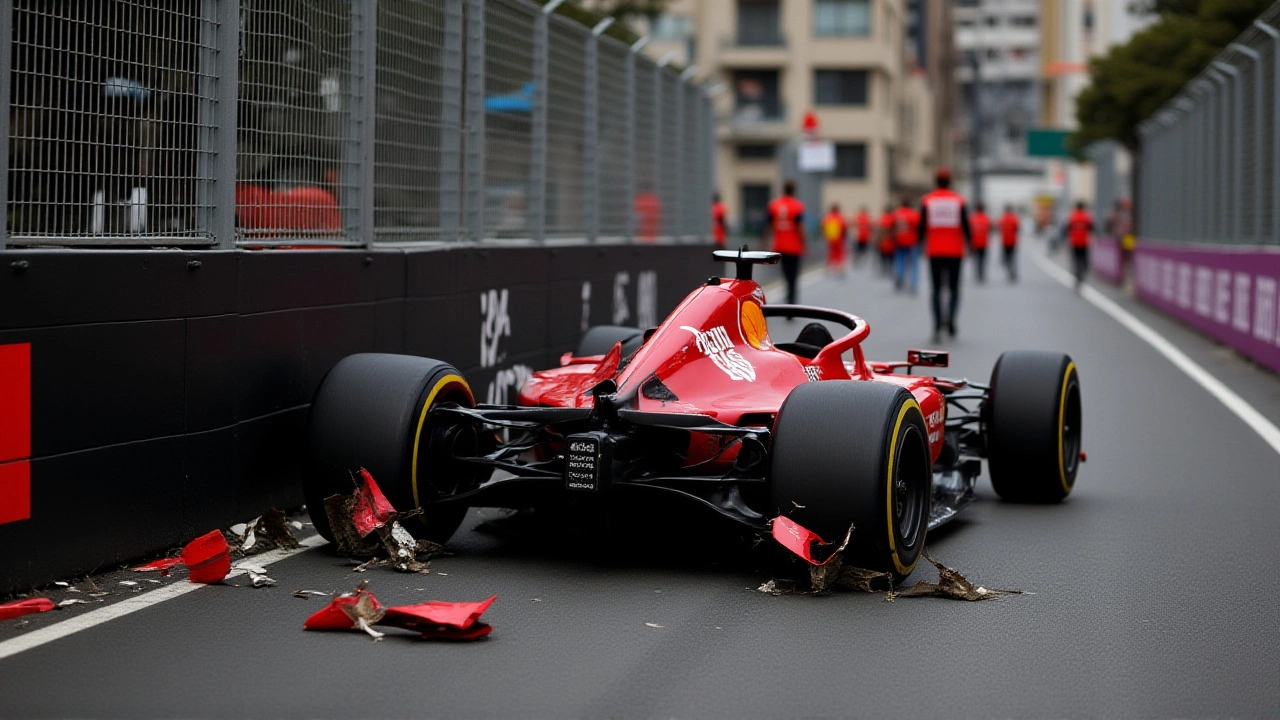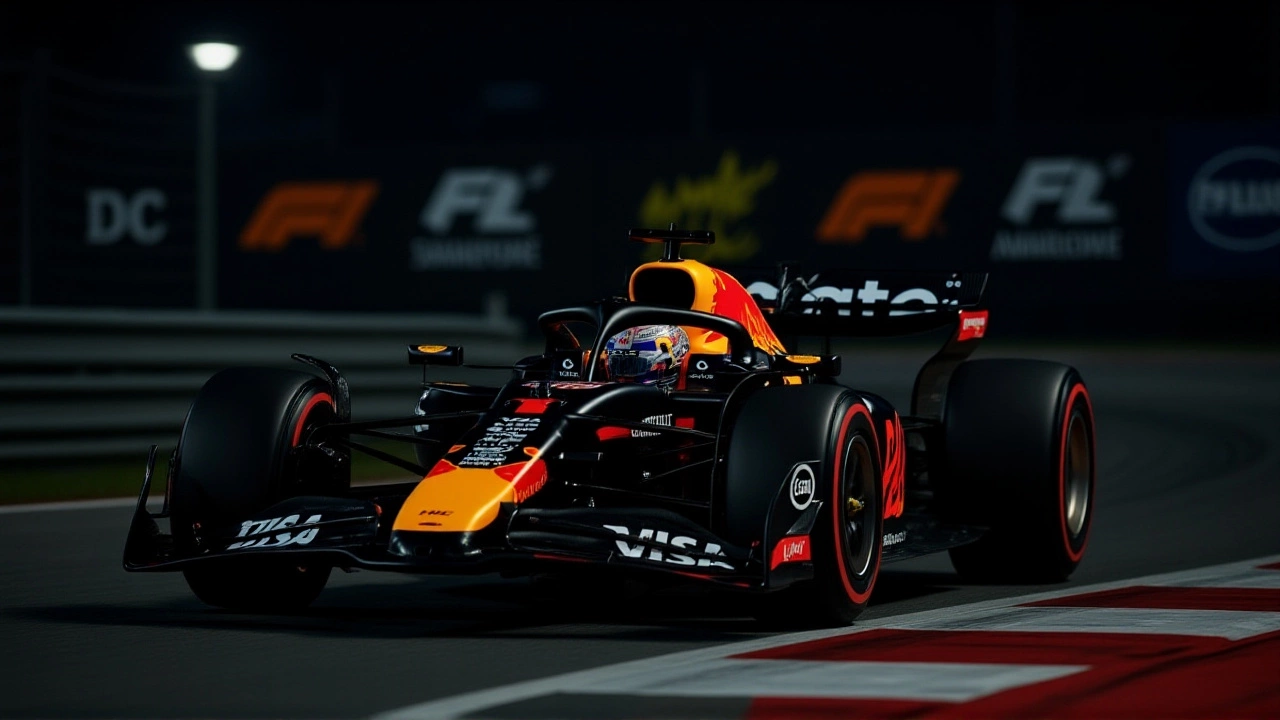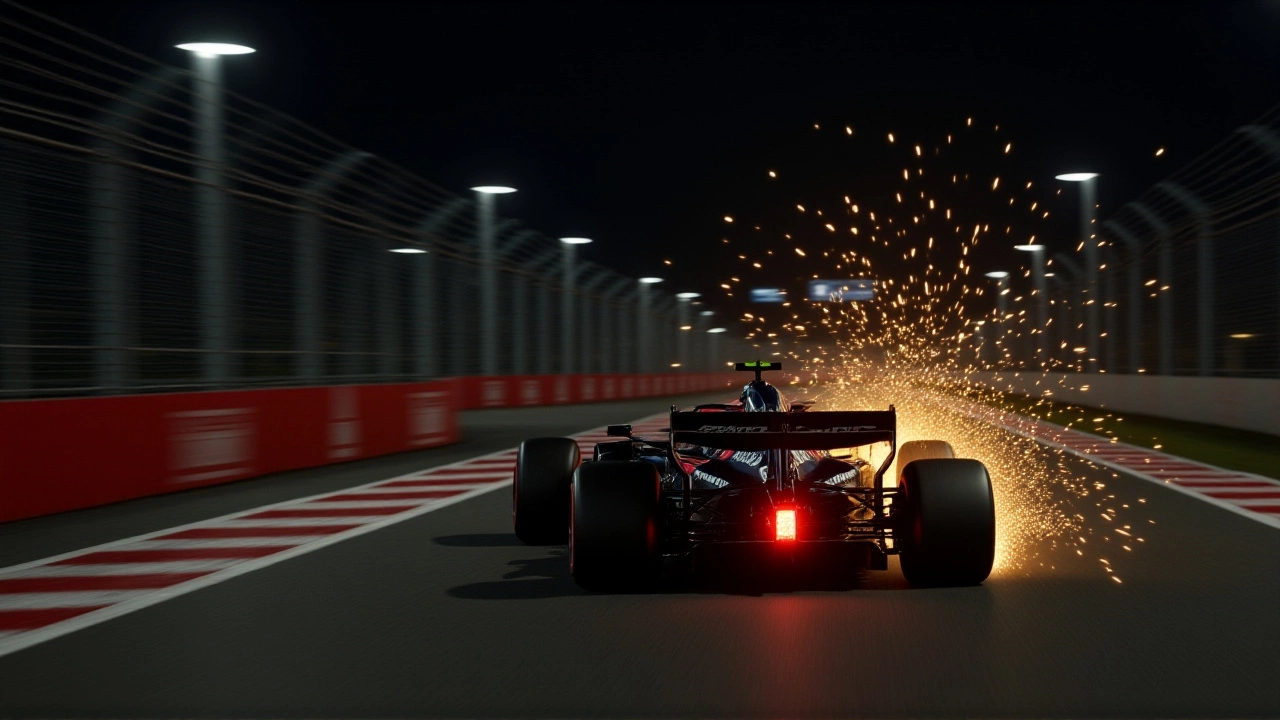Verstappen Snags Pole at Azerbaijan GP as Qualifying Sets Red‑Flag Record

- Oct, 5 2025
- Jenson Lockhart
- 0 Comments
When Max Verstappen, lead driver of Red Bull Racing, clinched pole for the 2025 Azerbaijan Grand PrixBaku City Circuit on September 20, 2025, the paddock was still reeling from an unprecedented six red‑flag stoppages. The Dutch ace’s blistering lap of 1:38.452 not only handed him his sixth pole of the season but also highlighted why he remains the benchmark for single‑lap speed.
Record‑Breaking Qualifying Chaos
The Baku street layout – 6.003 km of long straights punctuated by tight hairpins – has always been a test of bravery. This weekend, that test turned into a full‑blown obstacle course. Six red‑flag periods, the most ever in a Formula 1 qualifying session, stretched the hour‑long programme to nearly 90 minutes. Each stoppage forced teams to juggle tyre allocations and give drivers precious extra warm‑up laps, but it also robbed many of a clean flying lap.
First up, Alex Albon clipped the barrier at Turn 2, ending his run. A few minutes later, Nico Hülkenberg slid wide at Turn 4, slammed into the soft‑tech pro barrier and triggered the second red flag. The third came when Lance Stroll crashed hard, leaving his Aston Martin without a representative time.
Mid‑session drama kept escalating. Argentine rookie Franco Colapinto suffered a heavy hit that required an extended clean‑up, accounting for the fifth stoppage. The final red flag was summoned when Hülkenberg, attempting a recovery lap at Turn 15, locked his brakes again – this time narrowly avoiding another wall.
In total, the six interruptions cost the grid roughly 12 valuable seconds of flying time per driver, a margin that proved fatal for several title contenders.
How Verstappen Secured Pole
While the chaos rattled many, Verstappen kept his cool. After the third red flag, the Red Bull crew adjusted the rear‑wing angle by 0.5 degrees, a tweak that helped the RB19 bite into the long Baku straights. On his final hot‑lap, Verstappen hit the apex of Turn 1 at 322 km/h, then hauled the car through the tight Turn 8 complex with surgical precision.
"The track threw everything at us today, but the car felt great on the long sections," Verstappen said in post‑qualifying debrief. "When the reds came back, I just focused on getting a clean rhythm and made the most of the tyre temperatures we had."
Christian Horner, team principal of Red Bull, added, "Max knows how to extract a perfect lap when the pressure is highest. The six red flags gave us extra opportunities to fine‑tune the setup, and Max delivered when it mattered."
Midfield Surge: Sainz and Lawson
Equally impressive was Carlos Sainz in the Williams Racing car. The Spaniard posted a 1:38.761, just 0.309 seconds shy of Verstappen, earning Williams its best grid slot of the season. "It’s a huge confidence boost for the whole team," Sainz told reporters. "Baku is a nightmare when you’re on the limit, but the car behaved beautifully, and the drivers kept their composure despite the reds."
Newcomer Liam Lawson backed that claim with a third‑place finish for Racing Bulls. The New Zealander’s lap of 1:38.842 showcased his growing familiarity with the street circuit, and it put him just 0.390 seconds off Verstappen’s time.
Williams technical director François Hélary (not a primary entity) noted, "Our aerodynamic package finally clicked on Baku’s long straights, and Carlos capitalised on that. The reds gave us a chance to re‑check tyre pressures, which paid off."

Top Teams Stumble
The session also delivered shock eliminations. Two‑time champion Fernando Alonso failed to advance from Q2 in his Aston Martin – a surprising result given his historic success at Baku.
Even more startling was seven‑time world champion Lewis Hamilton, who stalled his Ferrari on the start‑line of Q2 and couldn’t post a competitive time. The Italian team’s tyre strategy, heavily influenced by the frequent red flags, left Hamilton on a fresh set too early, forcing him to limp back onto the grid with a sub‑optimal compound.
"We’ve got a lot of work to do on the car’s balance," Hamilton said after the session. "Baku is unforgiving; a single mistake and you’re out, especially when the stops keep breaking your rhythm."
Strategic Implications of Six Red Flags
- Teams were forced to shave tyre allocations by up to two sets, prompting fresh‑lap compromises.
- Red‑flag restarts gave a handful of drivers (notably Verstappen and Sainz) extra warm‑up laps, an advantage that others couldn’t exploit due to earlier damage.
- Fuel loads remained unchanged, but the cooling periods altered brake‑temperature curves, forcing engineers to tweak cooling ducts mid‑session.
- Six stoppages set a new qualifying record, eclipsing the previous high of four red flags at the 2022 Monaco Grand Prix.
For the race on September 21, teams will have to decide whether to chase outright speed or preserve the tyre life that proved so fragile in qualifying. Red Bull’s strong pole suggests they’ll aim for a clean‑air run, while Williams will be looking to translate Sainz’s grid‑side performance into points.

Looking Ahead to Race Day
With the pole locked in, the focus now shifts to strategy. The Baku City Circuit’s 51‑lap, 306.153‑km distance rewards a low‑fuel approach, but the high‑temperature September weather could push tyre degradation beyond the limits seen in Saturday’s session.
Analyst Mark Miller predicts a two‑stop race for most front‑runners, noting, "The six reds showed how quickly the track can become a mess. Teams will try to stay out of the walls and manage brake wear; a safe, steady pace might win the day more than outright speed."
For fans, the drama isn’t over. Should Verstappen convert pole to a win, he’ll notch his ninth career victory in Azerbaijan, tightening his lead over Hamilton in the Drivers’ Championship. Meanwhile, Williams and Racing Bulls will be hoping that their midfield surge translates into a podium punch‑up.
Frequently Asked Questions
How did the six red flags affect the final grid order?
Each stoppage forced teams to reset their tyre strategies, meaning drivers who could set a clean lap early – like Verstappen, Sainz and Lawson – kept their positions. Others lost the chance to improve times after damage or lost track time, which is why high‑profile names such as Alonso and Hamilton fell out of the top ten.
What makes the Baku City Circuit so challenging for qualifying?
The circuit mixes 2.5‑km of ultra‑fast straights with tight, low‑speed corners. Brakes overheat on the long back‑straight, while the narrow sections demand razor‑sharp steering. Any loss of grip sends a car straight into the walls, which is exactly what we saw with Albon, Stroll and Colapinto.
Will Red Bull’s pole position guarantee a race win?
Pole is a huge advantage, but Baku’s race history is littered with surprise winners due to safety‑car periods and tyre wear. If Red Bull can keep Verstappen out of trouble and manage tyre degradation, a win is likely; otherwise, a late‑race safety car could reshuffle the order.
How significant is Carlos Sainz’s second‑place qualifying for Williams?
It’s the best grid slot Williams has seen this season and signals that their aerodynamic upgrades are finally paying off on high‑speed circuits. A strong race finish could boost the team’s points haul and morale heading into the final stretch of the calendar.
What are the chances of further red‑flag incidents during the race?
Given the narrow streets and the recent spate of crashes in qualifying, it wouldn’t be surprising to see at least one more safety‑car period. Drivers will likely be a bit more cautious, but the lure of Baku’s long straights always tempts a hard‑brake mistake.
Write a comment